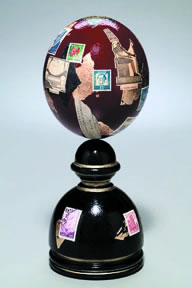It;s a revelation that a Friedman scholar, among the most trusted figures of the last millenium goes on record against the reactionary elite. And he praises Bill Clinton. Ouch, Rove. {Also. New Yorker, Page 45. Biggest Urbana Head.}
Once and always thank you Alan Greenspan.
WASHINGTON (
Reuters) - Former Federal Reserve Chairman Alan Greenspan in a memoir to be released on Monday criticized President
George W. Bush and congressional
Republicans for abandoning fiscal discipline and for putting politics ahead of sound economics.
In his book, "The Age of Turbulence: Adventures in a New World," Greenspan said he was surprised Bush was unwilling to temper his campaign promises with fiscal reality once elected in 2000, as previous Republican administrations had done.
"Little value was placed on rigorous economic policy debate or the weighing of long-term consequences," he said. The book was made available by its publisher, The Penguin Press.
"Much to my disappointment, economic policymaking in the Bush administration remained firmly in the hands of White House staff," he said.
Greenspan, now 81, was the second longest-serving chairman in the Fed's 93-year history when he stepped down in January 2006.
Praise has been heaped on the New York native and self-described "libertarian Republican" for overseeing the longest U.S. economic expansion on record.
Greenspan built his reputation as Fed leader with his calm handling of the stock market crash of 1987, the 1997-1998 Asian and Russian financial crises, and the economic turbulence that followed the September 11, 2001, attacks on the United States.
But he has also come under fire for policies that some say led to bubbles in technology and housing. His successor, Ben Bernanke, is coping with a prolonged housing downturn and credit-market turbulence.
Greenspan's long association with Republican administrations and his reputation for independence add clout to his criticism of Bush and of other Republicans who led Congress until 2006.
TAX CUTS AND SPENDING
Greenspan said Bush's combination of tax cuts and spending on the military and prescription drug benefits, while not "unrealistic" in 2000 after several years of federal budget surpluses, was not appropriate with growing deficits that returned in 2002.
The former Fed chair said he urged Bush to veto a string of "out-of-control" spending bills, but to no avail. He was told the president wanted to avoid antagonizing Republican political leadership.
"To my mind, Bush's collaborate-don't-confront approach was a major mistake -- it cost the nation a check-and-balance mechanism essential to fiscal discipline," Greenspan said.
White House spokesman Tony Fratto said on Saturday the administration conducted "rigorous" analysis and that tax cuts sped up the U.S. economic recovery after the 2001 recession.
"Because Congress worked with us, vetoes weren't necessary. We're not going to apologize for increased spending to protect our national security," Fratto said.
But Greenspan said Republican lawmakers sowed the seeds of their political defeat in 2006 by abandoning fiscal prudence.
"They swapped principle for power. They ended up with neither. They deserved to lose," he added.
A consummate Washington political insider linked to former presidents
Richard Nixon and Gerald Ford before becoming Fed chairman in 1987, Greenspan also has been criticized for backing Bush's tax cuts plan before Congress in January 2001.
Greenspan said that position was balanced with a call for safeguards in case the fiscal situation deteriorated. But in his memoir, he ruefully acknowledged he underestimated how his words would be selectively interpreted.
"While politics had not been my intent, I'd misjudged the emotions of the moment," he said.
Fending off criticism that rock-bottom borrowing costs early this decade fueled the housing bubble that has caused a burst of foreclosures, Greenspan said the unusual risk of a downward price spiral was serious and had to be dealt with.
"We wanted to shut down the possibility of corrosive deflation; we were willing to chance that by cutting rates we might foster a bubble ... It was a decision done right," he wrote.
Looking at the U.S. economic future, Greenspan warned that to keep the inflation rate between 1 percent and 2 percent in coming years the Fed may need to force interest rates into double digits.
If the Fed succumbs to political pressure to keep interest rates low, inflation rates could rise to an average of 4 percent to 5 percent by 2030, and yields on 10-year Treasury notes would rise to at least 8 percent, he wrote.



 The Behavioral Sciences Building expresse a jump forward
The Behavioral Sciences Building expresse a jump forward


